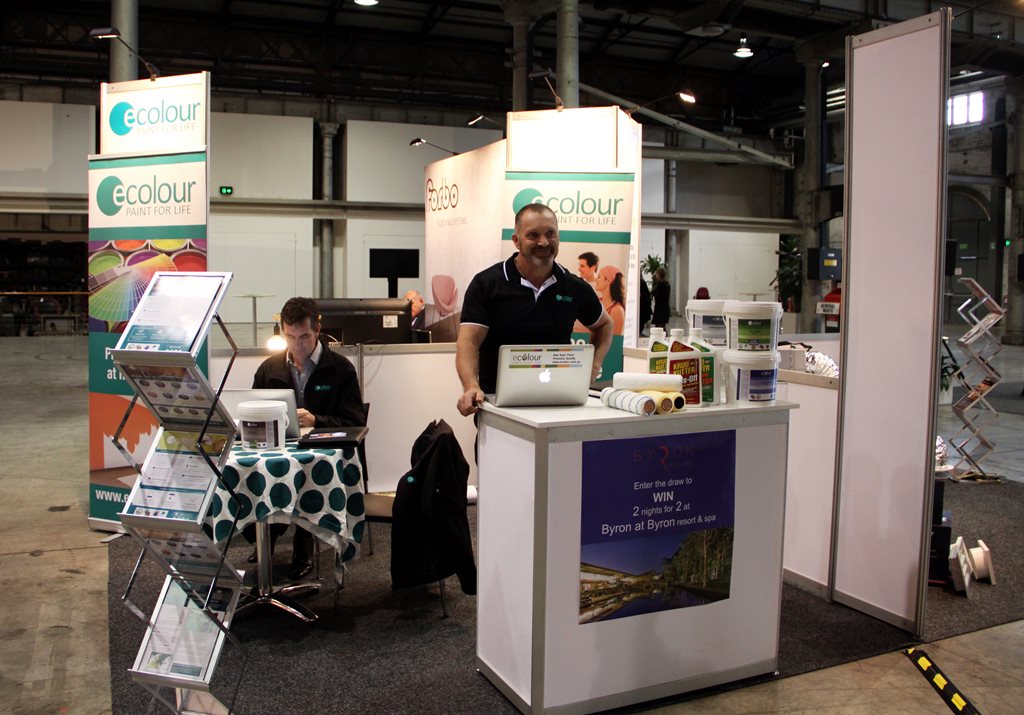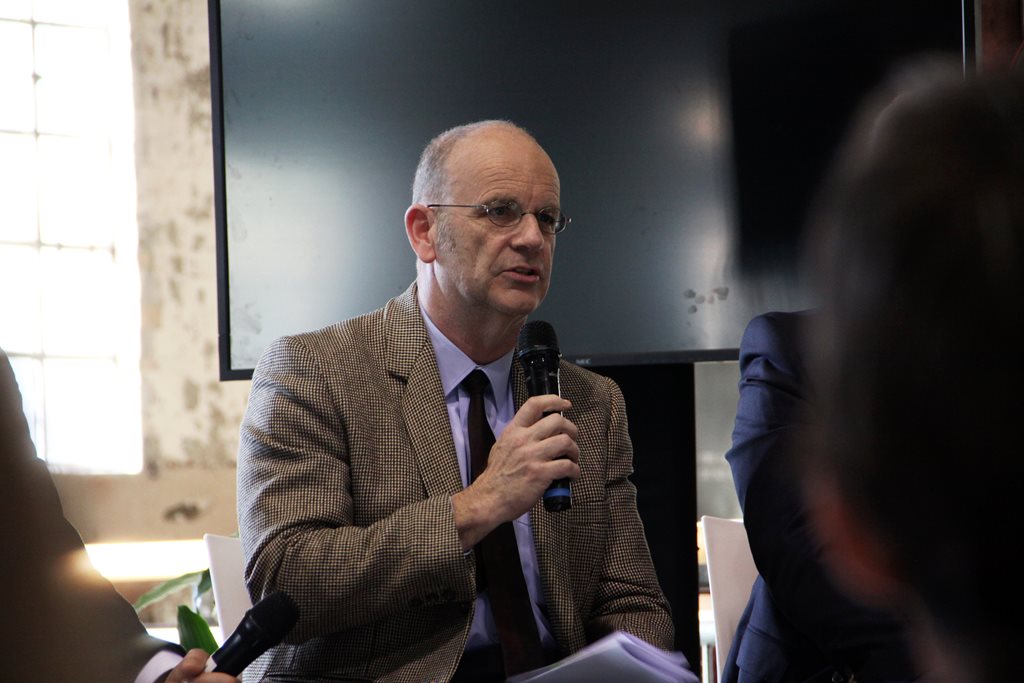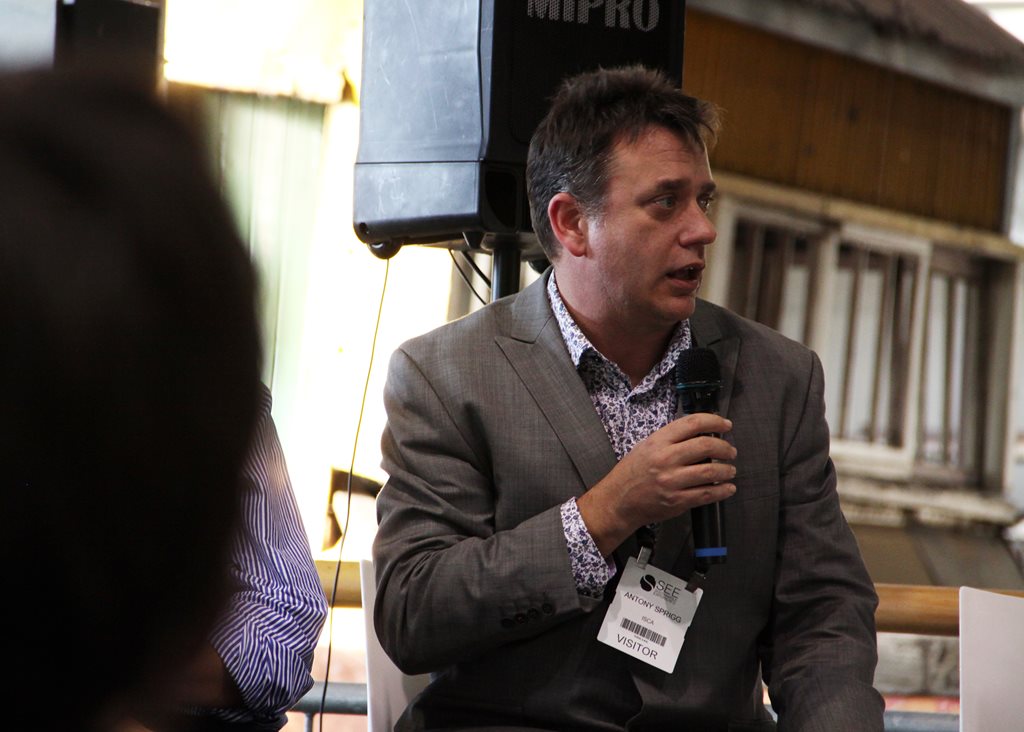On the 21-23 of July, Sydney’s Australian Technology Park (ATP) played host to a trade show called See Sustainable Experience. The event was billed as the nation’s leading showcase of sustainable building products and it provided suppliers and manufacturers a platform to pitch their latest offerings to an audience truly interested in green building practices.
The event followed the traditional trade show format, a hall at ATP was hired out and filled mostly with small exhibits, and there was a variety of areas devoted to presentations and seminars that were spread out over the three days. Other than its size (the exhibition demanded a fraction of the floorspace that major trade shows do), the biggest difference between See and other events was its primary focus.
It was refreshing to hear exhibitors voicing the sustainability story of their products and even better to see the entrepreneurs and upstarts given legitimate opportunity to match it with the bigger building product manufacturers on this end (of course only if they paid for it).
It was also interesting to see the event organisers and participants grapple with the challenges of valuing and commodifying sustainability, challenges that were repeatedly discussed and strategised throughout the event’s many seminars.
PUTTING A PRICE ON SUSTAINABILITY

A tax on externalities would help companies like Ecolour, who manufacture no VOC paints, become more competitive and specified. Photography by Nicholas Rider
One of the highlights of See Sustainable Experience was the Industry Q & A Panel held on Friday afternoon. Chaired by Sustainability Awards judge Alistair Coulstock of Cundall, and formed by representatives from nearly all the key building industry bodies.
The panel touched on four or five challenges faced by looking to build green but in doing so continually returned one major barrier considered to be shackling its progress; our culture. The consensus around the panel was that Australia is performing well below is potential in terms of sustainable building because, quite simply, the majority of us don’t care for it.
But how do we change this culture? How do we make people care about the sustainability of their buildings?
As it stands in the Australian market, building green costs more, particularly for commercial and large-scale developments. When domestic demand is low, so too is supply, forcing those seeking sustainable building products to either pay a premium or look to international sources.
“Let’s not kid ourselves, building green costs more,” said Brian Seidler from the Master Builders Association.
“Then what happens is we look overseas and start importing cheap and dodgy building products,” said Lindsay Le Compte form Australian Constructors Association.
Another part of the problem, says the panel chair, Alistair Coulstock, is that energy is generally too cheap to be a standalone driver for change (as a ratio of energy bills to total outgoings of a company’s running costs), and that developers are unlikely to invest in sustainable building because the ROI is also too low.
So then, back to the catalyst for change. Where’s it going to come from?
Seidler noted that until the introduction legislation that forced contractors to conduct work health and safety (WHS) management plans for major construction projects (anything that exceeds $250,000), ensuring safety was a costly and mostly avoided process. Those who did conduct safety management plans prior to it becoming compulsory were immediately at a disadvantage to those competitors that didn’t.
Mandatory safety management plans meant builders could cost safety and this, believes Seidler, could be key to a faster uptake of sustainable building practices in Australia.
LEGISLATE OR BUST?

The introduction of mandatory safety management plans in Australia meant builders had to employ and cost safety. This, believes Brian Seidler from the Master Builders Association, could be employed for sustainable building practices. Photography by Nicholas Rider
Ann Austin, National Sustainability Manager for Lendlease noted that that part of Australia’s problem is that the current economic system demands a business case for any development strategy, including sustainability strategies.
This, says Austin, even occurs when suggesting non-toxic building materials for a project to reduce occupant exposure to VOCs.
“Why are we asked to cost something that’s toxic?” Austin asked, half-jokingly.
A general consensus around the panel was that legislation is needed to give developers the business case for building sustainable. Taxing externalities was a term thrown around the panel but whether or not putting a price on things like VOCs and carbon would work was not agreed upon.
The conversation inevitably turned to the failed Carbon Tax and it seems, even among Australia’s leading sustainable thinkers, to have created an element of doubt in the case of taxing externalities.
Coulstock mentioned that this would need to incorporate a mass collection of data regarding the properties and performance of building materials, but he did not consider this an overly daunting task. Brian Seidler from the MBA, suggested this could also be a way to combat the importation of non-complying building materials.
Another case was for updating the Building Code of Australia, which as one panellist said “is seen as the ceiling when it really should be considered the floor.”
BIM AND DISAGGREGATION

Antony Sprigg, Infrastructure Sustainability Council of Australia. Photography by Nicholas Rider
The panel finished with a discussion around future trends and, in particular, focussed on the role of data and building information modelling.
All agreed that BIM had the potential to play an important role in aiding a more sustainable built environment in Australia, but, unfortunately, also agreed that it is currently being deployed way below its potential.
Its under-use, according to Antony Sprigg from the Infrastructure Sustainability Council of Australia is caused by a disaggregation among the the parties involved in major projects; designers, developers and asset owners. Currently, says Sprigg, BIM is being used merely as a construction tool and is barely being deployed as a performance tool as it is intended.
The panel concluded by suggesting that Australia’s sustainable building industry would benefit by a coming together of all parties involved in the process of development. The panel made a pledge to do just that, albeit on a small scale, by creating a focus group to continue the discussion brought up on the day.
We’ll keep you updated on that.
THE PANEL
Facilitator:
- Alistair Coulstock, Cundall
Panelists:
- Peter Poulet, NSW Government Architect
- Antony Sprigg, Infrastructure Sustainability Council of Australia
- Brian Seidler, Master Builders Association New South Wales
- Cathy Inglis, Brickworks Building Products
- Dr Richard Strauch, Boral
- Sophie Solomon, Royal Australian Institute of Architects NSW
- Dick Clarke, Building Designers Australia
- Ann Austin, Lendlease
- Robin Mellon, Supply Chain Sustainability School
- Lindsay Le Compte, Australian Constructors Association

